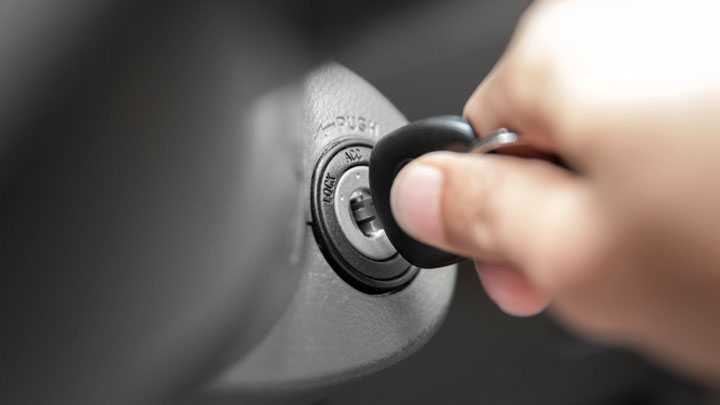Last Updated on April 29, 2022
As much as we wish for our vehicles to operate without issue, the odd mechanical issue does tend to arise from time to time. Unfortunately, this comes with the territory and serves as a point of aggravation for an untold number of motorists on an annual basis.
One must simply overcome the issue at hand, by locating and repairing the root cause of their vehicle’s issues. However, for many motorists, this is a more difficult proposition than it might seem.
Luckily, one can reference their vehicle’s stored diagnostic fault codes to get a leg up on any potential problems. One such fault code that can alert drivers to a potential issue with their vehicle is DTC P0351, which references an ignition system control fault.
Read on to learn more about DTC P0351, as well as how to remedy such issues, should they arise in the future.
What Does Code P0351 Mean?
Diagnostic trouble code P0351 is indicative of a fault within the driver circuit of an engine’s #1 ignition coil. This fault can originate within the primary portion of this circuit (ECM/PCM), or the secondary side of the circuit (spark plug). Regardless of the origins of this fault, code P0351 indicates that the ignition feed to the affected cylinder has been compromised.
To better understand this point, one must first recognize the role that a vehicle’s ignition coil plays in combustion. Most modern vehicles now feature a coil-on-plug ignition system, which negates the use of spark plugs.
Each cylinder features a dedicated coil, mounted directly on top of its corresponding spark plug. When directed by the vehicle’s PCM/ECM, the coil energizes, allowing the affected spark plug to arc.
However, in the case of diagnostic trouble code P0351, the circuit for the #1 ignition coil has been compromised in a way that prevents the firing of that cylinder’s spark plug.
As a result, combustion is prevented, thereby negatively affecting engine performance. In certain cases, the injector function also ceases, while the operation continues in spite of DTC P0351 in regards to some vehicles.
Symptoms of Code P0351

There are a number of symptoms associated with diagnostic trouble code P0351, some of which tend to be more severe than others. Recognizing each of these symptoms will assist you in identifying the issue at hand in a more timely manner.
The following are several of the most common symptoms associated with diagnostic trouble code P0351.
- Illuminated check engine light
- Hard or reluctant start
- Rough or erratic idle
- Engine misfire
- Lack of power under considerable load
Causes of Code P0351

Diagnostic trouble code P0351 can be caused by a handful of potential underlying issues, some of which are more easily identified than others. Understanding each of these potential root causes makes it easier to diagnose the source of your vehicle’s issues.
The following are several of the most common causes of diagnostic trouble code P0351.
- Fouled or inoperable spark plugs
- Faulty plug wires
- Defective ignition coil
- Loose electrical connection
- Compromised ignition circuit wiring
- Vacuum leak
- Intake/ EGR faults
- Faulty ECM
Is Code P0351 Serious?
DTC P0351 is generally considered to be quite serious in nature. This stems from the fact that a number of relatively severe driveability-related symptoms often accompany this DTC. As a result, you could be left stranded if your vehicle did not start, or could find yourself in a dangerous situation, should your car stall while in transit.
Additionally, prolonged issues of this type can lead to downstream catalyst damage. While some vehicles deactivate the fuel injector which corresponds to the affected cylinder, others do not.
This causes unburned fuel to be dosed downstream, into a vehicle’s catalytic convertor. This fuel allows superheating of the catalytic converter to occur, thus resulting in severe and costly damage.
In any event, you should attempt to accurately diagnose and repair the root cause of diagnostic trouble code P0351 at the first available opportunity. Doing so prevents excess damage from occurring to one or more of your vehicle’s critical systems.
If you do not feel comfortable making such repairs yourself, make an appointment with a trusted automotive service center as soon as possible.
How to Fix Code P0351

The following steps can be used to assist in diagnosing and remedying the root cause of your vehicle’s P0351 DTC. As always, you are highly advised to consult factory-specific service literature for your particular vehicle, before completing any such repairs.
#1 – Check For Additional DTCs
Before beginning the diagnostic process, check for the presence of additional diagnostic trouble codes, with the use of a quality ODD2 scan tool. Any active fault codes should be thoroughly diagnosed before proceeding.
#2 – Visually Inspect All Coil-Packs
Begin the diagnostic process by performing a thorough visual inspection of all coil-packs and corresponding wiring. Any components showing obvious signs of damage should be replaced, and all compromised components should be replaced.
#3 – Analyze Freeze-Frame Data
Next, study the freeze-frame data associated with DTC P0351, to confirm the number of the affected cylinder.
#4 – Switch Coil-Pack/Plug
After identifying the cylinder on which the current fault exists, move the suspected coil-pack and spark plug to a known good cylinder. Likewise, install the known-good coil pack and spark plug on the cylinder that previously misfires.
Check to see if the misfire moved with the suspect coil-pack and plug, or stayed with the same cylinder. These components should be replaced if the issue moved cylinders during this test.
#5 – Check Vacuum
Vacuum leaks can also cause erratic misfire issues. Therefore, you should utilize a vacuum gauge (or other method) to ensure that no vacuum leaks are uncovered prior to proceeding.
#6 – Check Compression
Next, a compression test should be performed to verify that the affected cylinders compression closely mirrors that of all known-good cylinders. A lack of compression on this cylinder would indicate internal engine damage.
#7 – Check For Power/Ground Distribution
If your prior compression test yielded satisfactory results, a check of power/Ground distribution will be necessary.
Referencing model-specific service literature, ensure that the coil-pack on the affected cylinder is receiving power/ground signal as specified. In most instances, this will require the use of a bi-directional scan tool.
#8 – Check Distribution at PCM/ECM
If distribution of power/ground was not evident at the coil-pack in question, perform the same checks at the PCM/ECM end of the same harness.
Readings should be checked at the pins of the PCM/ECM itself. Out-of-spec readings would indicate a faulty computer module.




